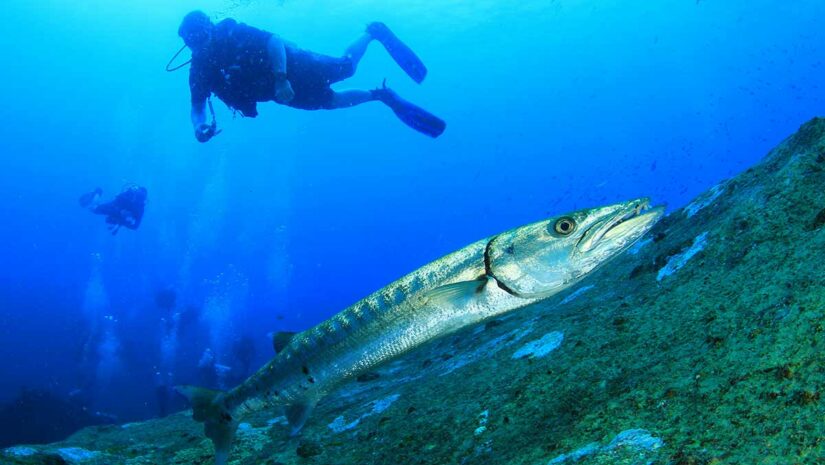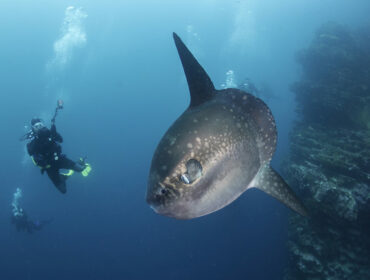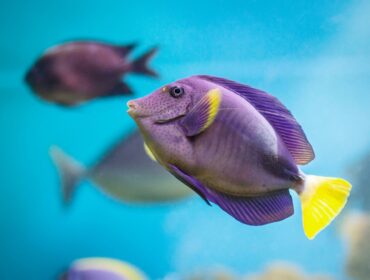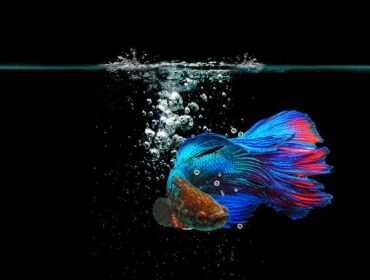One of the more amazing aspects of scuba diving is the chance to see aquatic creatures up close and personal that you see often in movies, books, and magazines. Spending all day watching the Discovery Channel ain’t got nothin’ on seeing beautiful Caribbean fish and marine animals with your own two eyes, and swimming alongside them is an experience you never forget.
Even more fun is when you start to identify the fish you see; calling out corals and naming nudibranchs along your dive is when you really begin to feel the connection you have with nature.
The Caribbean Sea is bursting with thousands of colorful life forms, from fish to corals to invertebrates to plants — you can literally never see the same sights twice. Check out our list of tropical fish that are commonly spotted in the Caribbean, and see how good your memory is when you move beyond the pictures of fish and into their world. Who knows, they just might start to recognize you!
Fish of the Caribbean
Smooth Trunkfish

The Smooth Trunkfish is an entertaining fish to witness while diving in the Caribbean’s crystal clear waters. They may be cute with their white polka dots and puckered lips, but they always seem to be on the hunt for their next meal. Smooth Trunkfish are easily found in sandy areas near just about any reef in the Caribbean, where they can be seen blowing jets of water in the sand to reveal food.
Great Barracuda
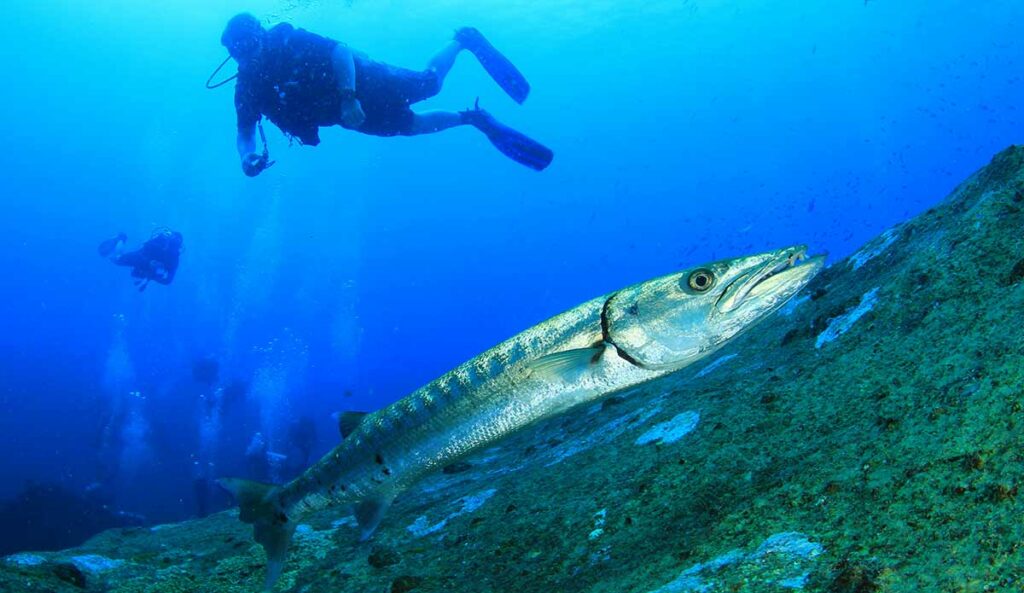
The Great Barracuda is named appropriately — the fish can grow to more than 6 feet. It has black spots on the lower part of its body, and the top portion remains silver, white, or blue. You’ll notice dark stripes on the top of its body.
Four Eye Butterflyfish
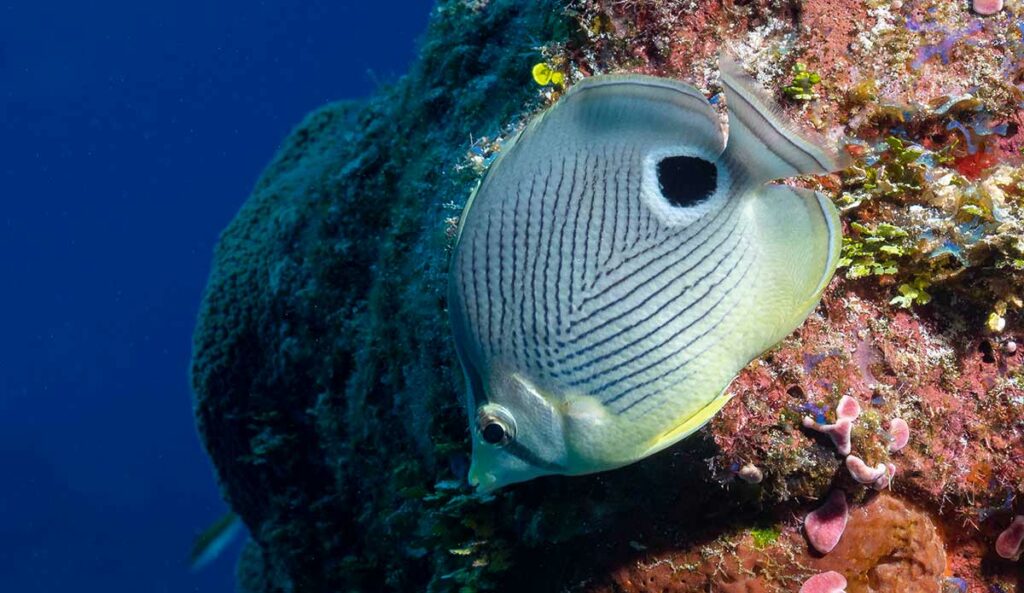
The Four Eye Butterflyfish doesn’t actually have four eyes, but a pair of real eyes and a pair of false eye on the back half of its body. It has shiny stripes down its body and bright yellow spots on its edges. This Caribbean fish is carnivorous, but a peaceful fish.
Spotted Scorpionfish
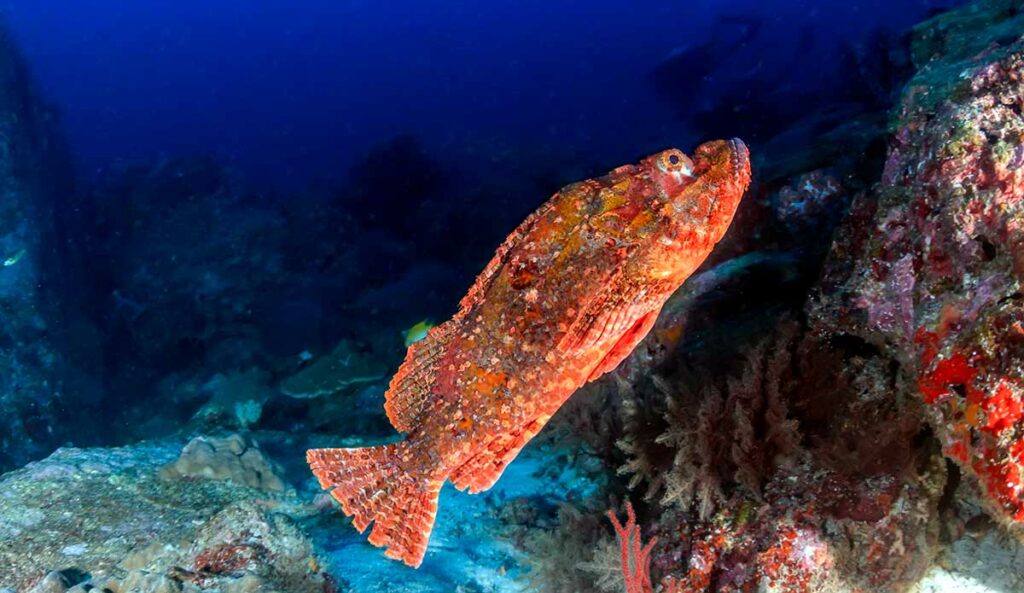
This patterned fish of the Caribbean is often perceived as being a large, ugly fish, with markings that help it blend perfectly into the seafloor where it lays in wait for its prey. Covered with black, brown, and dark gray spots on a pale background, the spotted scorpionfish is a striking species to see on the reef. It can grow to over 13 inches long and can be found within coral reefs, sea grasses, and sandy substrate environments. As the name implies, painful wounds can be inflicted if you come into contact with its sharp spines.
Goliath Grouper
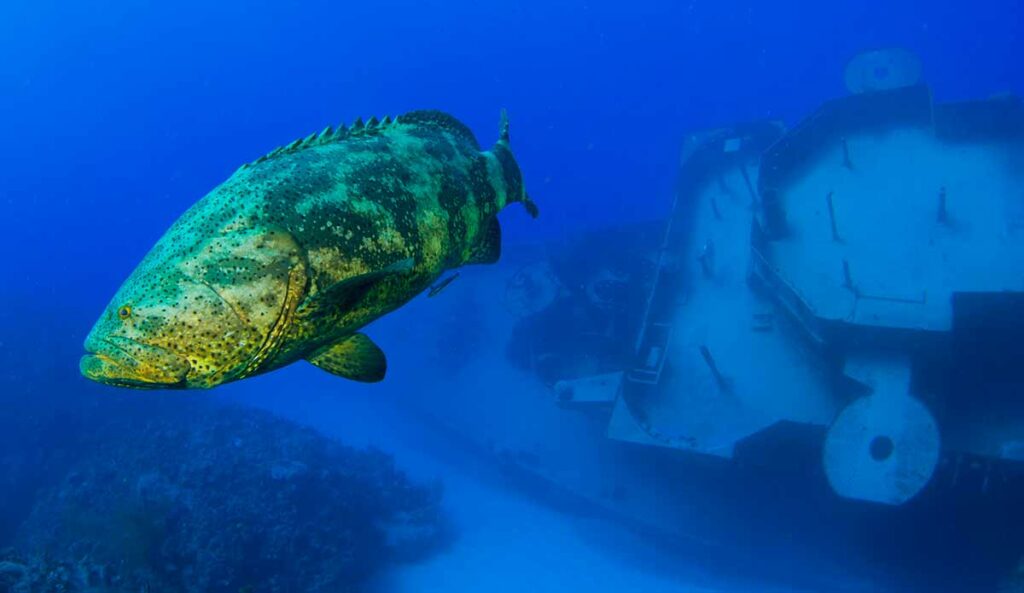
The goliath grouper is the largest member of the sea bass family, with specimens growing to an astounding 10 feet in length and a weight of up to 800 lbs. The primary food source of this fish includes crustaceans, rays, and mollusks. In the wild, it has been known to grow so large that even human divers have been the intended (though unsuccessful) victims of predation!
Its stout build and ridged dorsal fins contribute to its uncommon appearance. Coloration can range from olive to mottled grey, with the area of greatest spotting being around the head. When hunting, the large fish’s mouth is typically agape. In the wild, the fish can live upwards of 40 years. It is hypothesized that given the right conditions, this species can live even longer.
Banded Butterflyfish
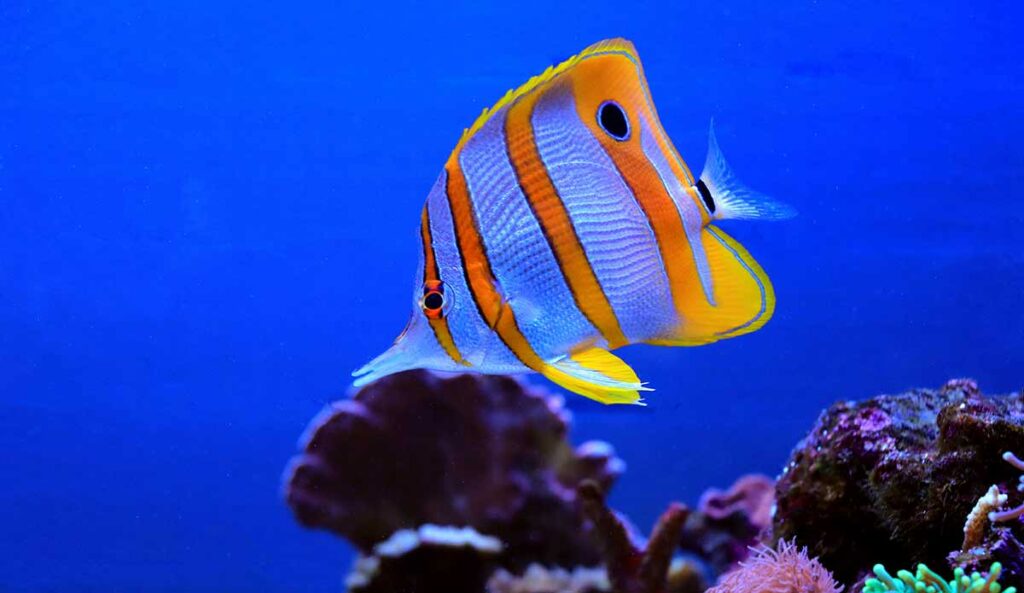
The Banded Butterflyfish is only one of numerous butterflyfish species found in and around Caribbean reefs. However, this particular species of butterflyfish is easily identified by the wide black vertical stripes that adorn its sides. It is a striking fish and a favorite of many snorkelers and SCUBA divers throughout the Caribbean.
Peacock Flounder
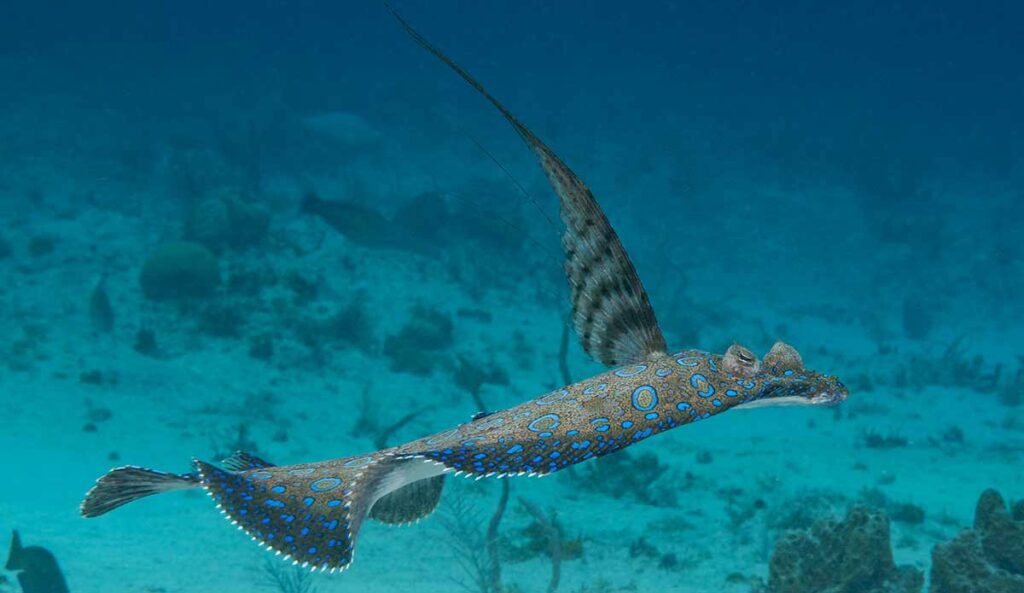
The Peacock Flounder is a master of camouflage and like a real peacock, it has bright blue spots all along its body. Like a flounder, it rests on the side of its body and can be spotted horizontally against the sea floor.
Queen Angelfish
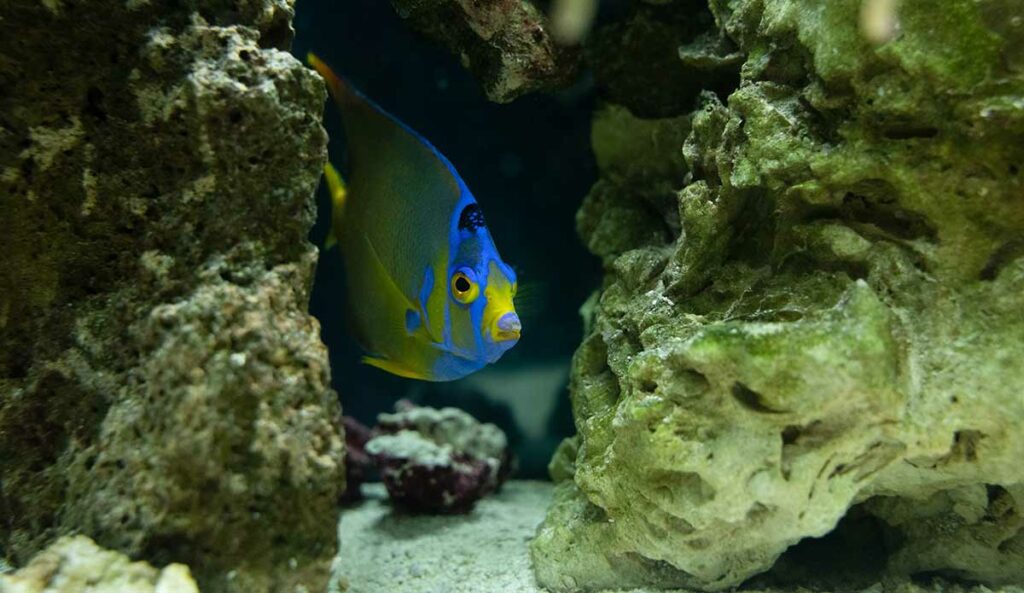
The Queen Angelfish truly is royal in its appearance. It has bright royal blue areas on its body, which is otherwise yellow and sometimes vibrant green. It can grow up to a foot and a half, so can be easily spotted in the open waters.
Sand Diver
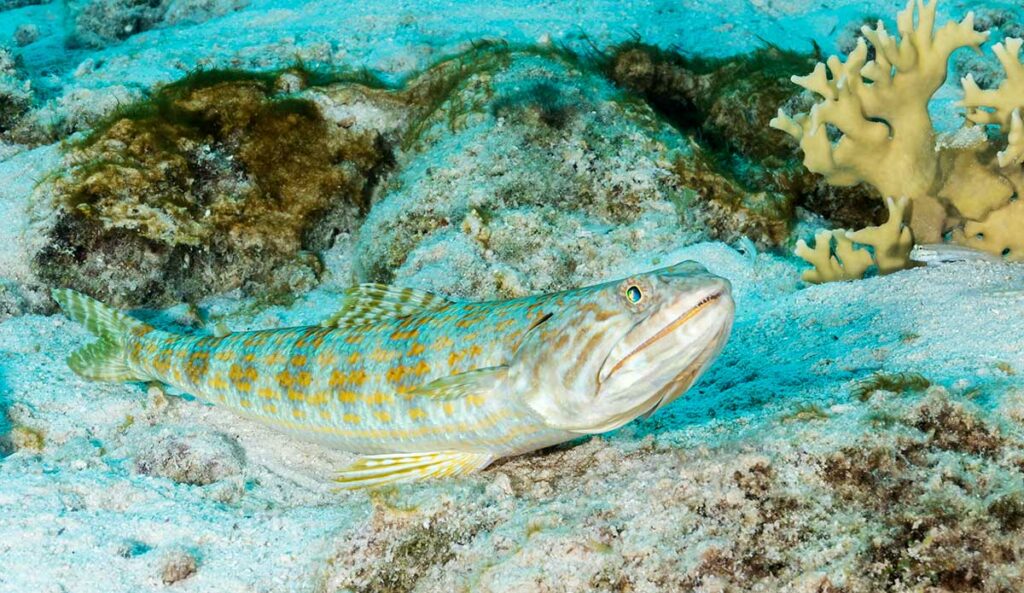
On the other hand, Sand Divers are quite difficult to spot. Often, entire groups of divers will pass right by them and fail to notice their presence. Perhaps this is due to the fish’s chameleon-like qualities, allowing them to disguise themselves quite well in the shallows using filtered sunlight and seagrasses.
Blue Striped Grunt
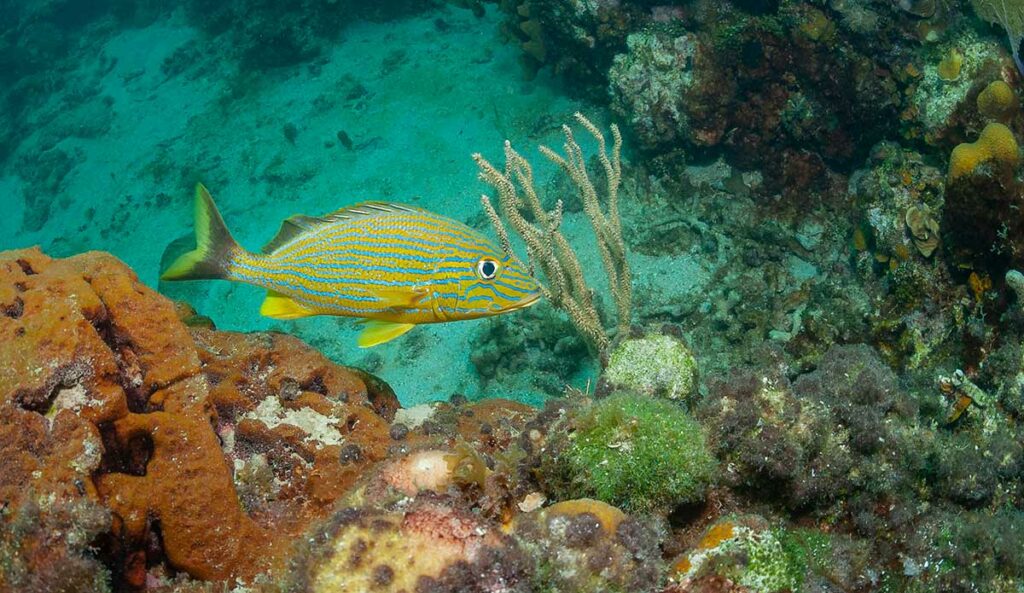
Of all of the tropical fish in the Caribbean, Blue-Striped Grunts and French Grunts are perhaps the most common. They can be seen swimming around almost every shallow reef around the Caribbean. Oddly, grunts acquired their names by the grunting sound that they produce when they grind their teeth together. The noise is then amplified by the air in their bladders and can be easily heard while underwater.
Squirrelfish
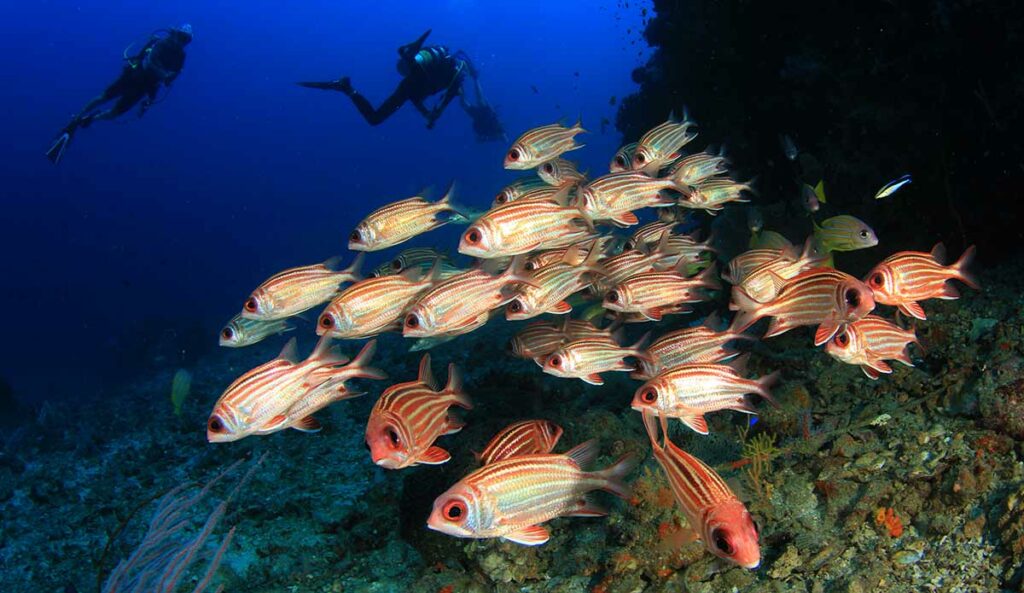
There are about 70 squirrelfish species in the world, and they live all throughout the tropical waters. These fish, which are also found in the Caribbean, are usually red, though some have been other colors, as well. It grows to about two feet The largest species is probably Holocentrus spinifer, a Pacific squirrelfish growing about 60 cm (24 inches) long. Squirrelfish are carnivorous and nocturnal, hiding by day among the reefs.
Spotted Drum
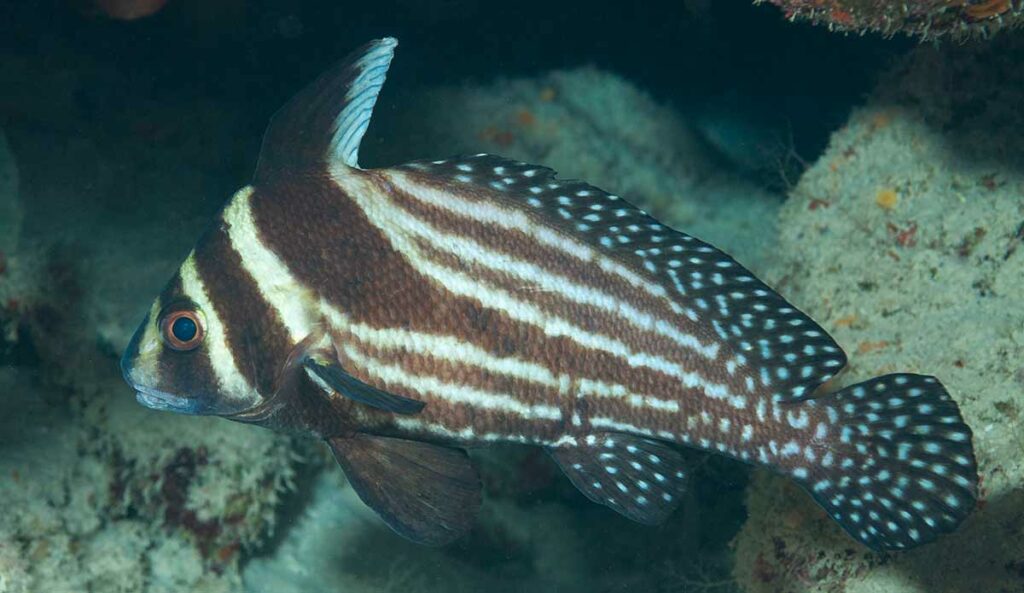
The Spotted Drum fish is a fascinating species found in the vibrant waters of the Caribbean. With its distinctive black body covered in white spots, this fish stands out in the coral reefs it calls home. Growing up to 12 inches in length, the Spotted Drum fish displays remarkable coloration and pattern variation, making it a favorite among divers and snorkelers. Its elongated dorsal fin and curious behavior add to its allure, making encounters with this charismatic fish an unforgettable experience in the Caribbean seas.
Blue Tang
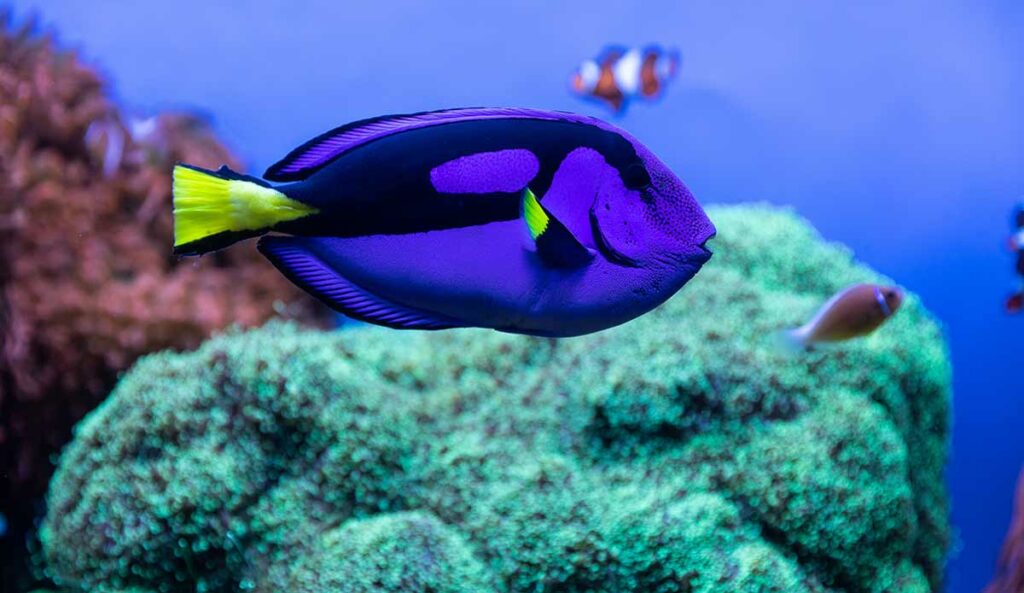
The Blue Tang fish is a beloved resident of the Caribbean’s azure waters. With its vibrant royal blue body and contrasting yellow tail, this fish is a true icon of tropical reefs. Growing up to 12 inches long, the Blue Tang’s sleek body and sharp spines make it an agile swimmer. Known for its friendly nature, it often forms schools and can be spotted gracefully navigating through coral formations. Its striking appearance and delightful presence make encounters with the Blue Tang a memorable experience in Caribbean snorkeling and diving adventures.
Saddled Blenny
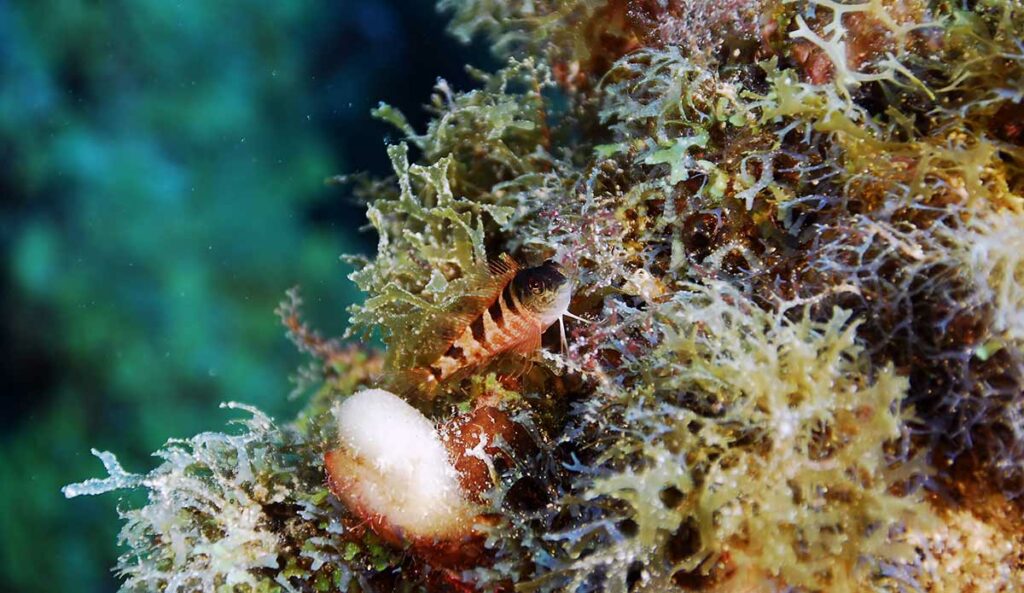
This three-inch patterned fish has a pale elongated body with dark red triangles along its sides, complete with a large red eye to distinguish it as a blenny. Like its blenny brethren, the tiger blenny doesn’t participate in a lot of socializing on the reef. Rather, it prefers to spend its time constructing a hidden burrow in the substrate while dining on available marine plants and algae.
White Spotted Filefish
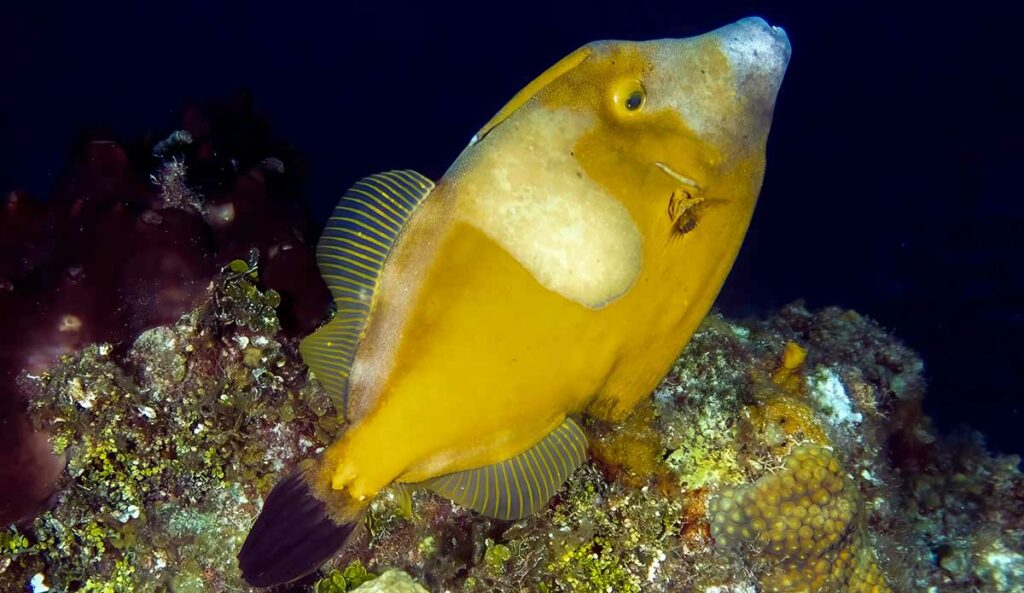
The White Spotted Filefish is a captivating fish found in the crystal-clear waters of the Caribbean. Its slender body is adorned with intricate patterns of white spots, creating a mesmerizing display. Growing up to 10 inches in length, this filefish has a unique ability to change its color and pattern, allowing it to blend seamlessly with its surroundings. Its elongated snout and slender shape enable it to explore coral reefs with ease, making it a fascinating species to encounter during underwater explorations in the Caribbean.
Porcupinefish
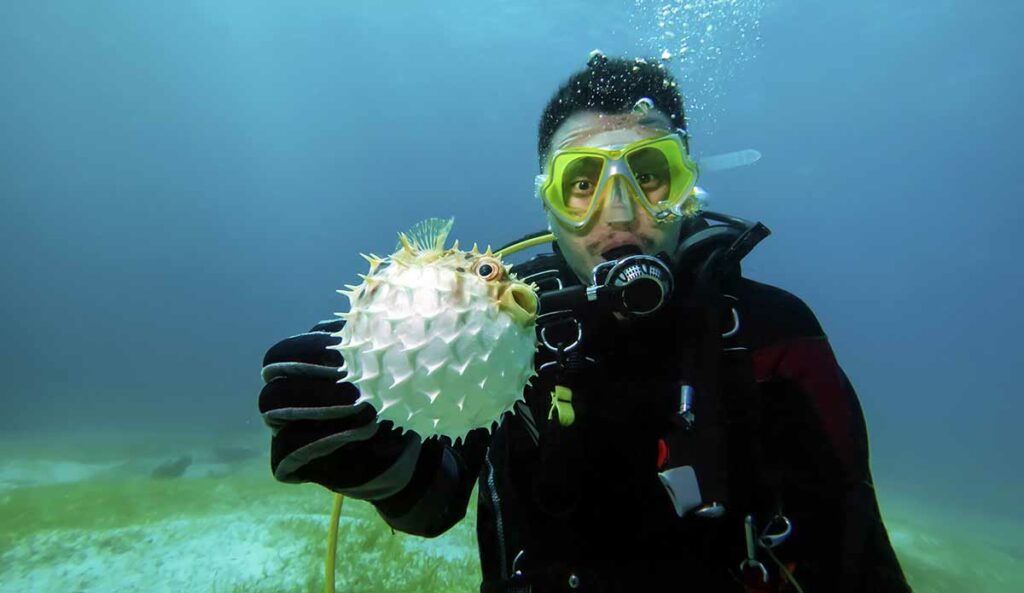
The Porcupinefish is an intriguing creature that inhabits the tropical waters, including the Caribbean. With its distinctive appearance, this fish boasts a rotund body covered in sharp, spiky spines. Growing up to 20 inches in length, it has the remarkable ability to inflate itself when threatened, transforming into a round, spiky ball as a defense mechanism. Despite its formidable appearance, the Porcupinefish is generally docile and can be spotted leisurely swimming near coral reefs. Its unique features make it a fascinating and sought-after sight for snorkelers and divers exploring the Caribbean waters.
Indigo Hamlet
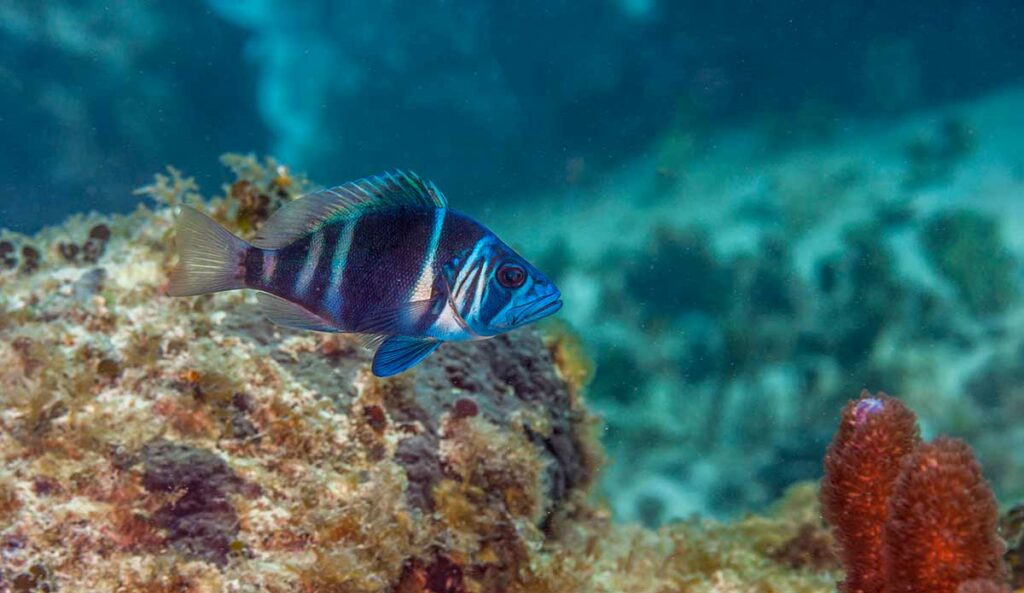
This patterned fish looks very much like a small bass, with a deep indigo body striped with white. It can be found throughout the Caribbean, up through the tropical waters of Florida. The indigo hamlet is a bottom-favoring species, but stays within well-defined territorial boundaries for its own protection.
Yellowtail Snapper
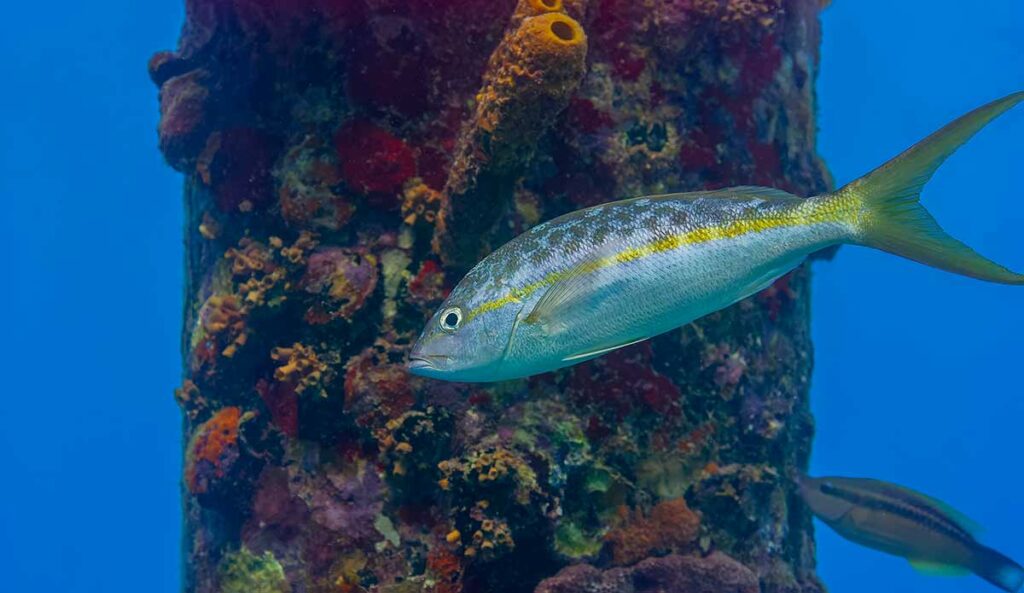
The Yellowtail Snapper is a striking fish that graces the warm waters of the Caribbean. Its slender body showcases a vibrant yellow color, contrasting with a distinctive dark stripe that runs from its snout to the base of its tail. Growing up to 16 inches in length, the Yellowtail Snapper is known for its agile swimming and remarkable maneuverability. With its sharp teeth and keen eyesight, it preys on smaller fish and crustaceans. Its flavorful white meat also makes it a popular catch for anglers and a delicious addition to Caribbean cuisine.
Trumpetfish
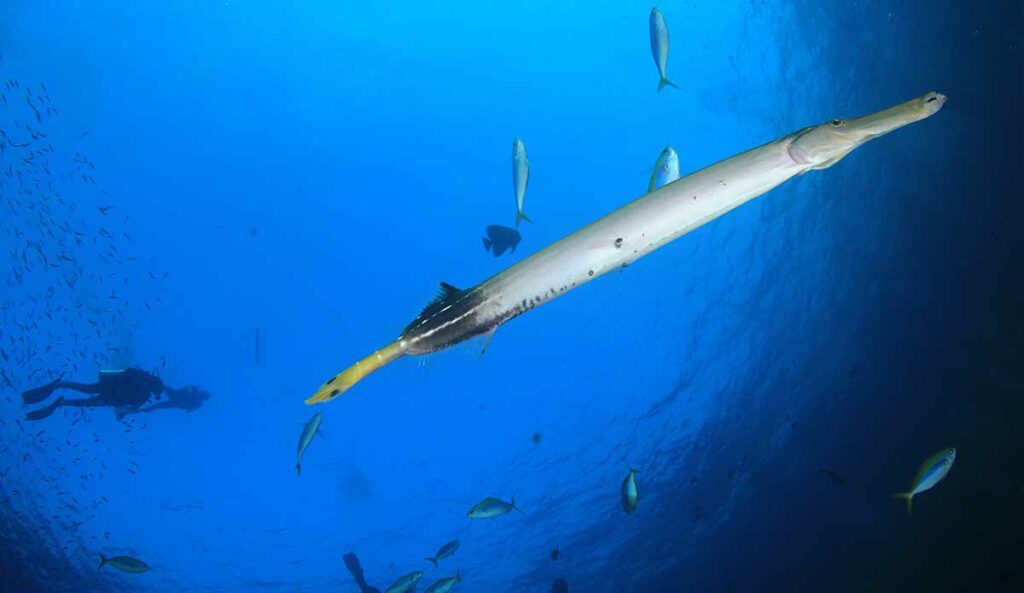
Trumpetfish are one of the easiest Caribbean fish species to identify. Their long, tubular bodies and trumpet-shaped snouts easily stick out, even on rainy and overcast days. They come in many colors, such as blue, brown, red, and bright yellow, allowing them to easily blend in with their reef habitats.
Tiger Goby
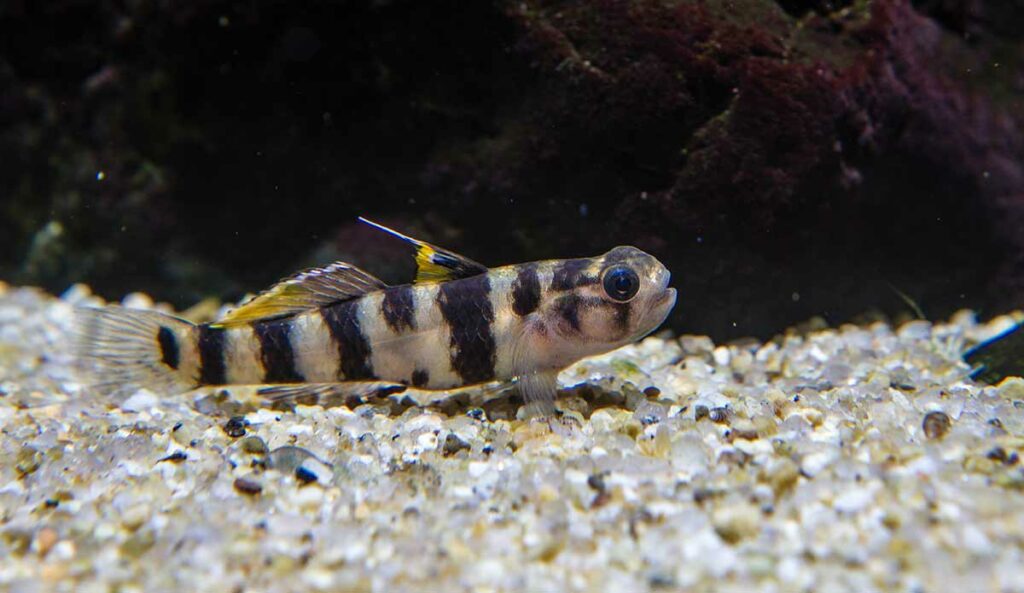
The little tiger goby shares its patterns with the animal that gives it its name. It has reddish-yellow tiger stripes on top of a pearlescent pale body from snout to tail. At just two inches long, the tiger blenny is commonly found in tidal pools from the south of Florida to Cuba and Haiti, and is often found on or near sponges.
Lionfish
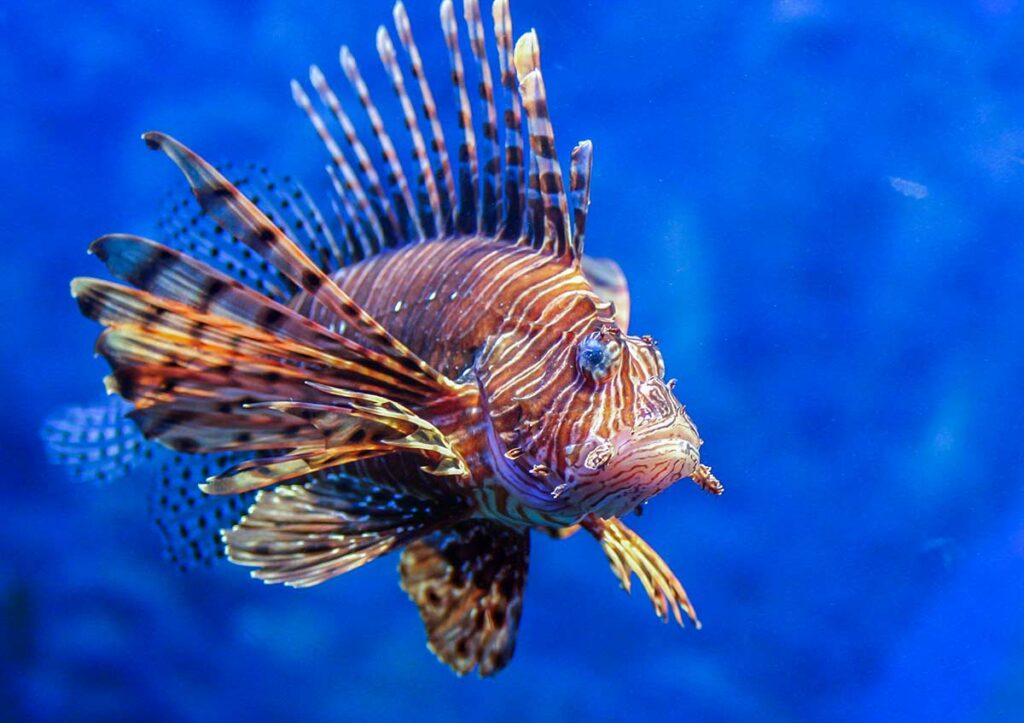
The lionfish is a visually captivating yet invasive species that has made its way into the Caribbean’s marine ecosystem. With its vibrant red, white, and black stripes, it stands out among other fish. However, its beauty masks a threat to the local biodiversity. Lionfish are voracious predators, known for their venomous spines and aggressive feeding habits. They consume large quantities of small fish and crustaceans, disrupting the balance of the ecosystem. Efforts are being made to control their population and minimize their impact on Caribbean reefs.
Chain Moray Eel
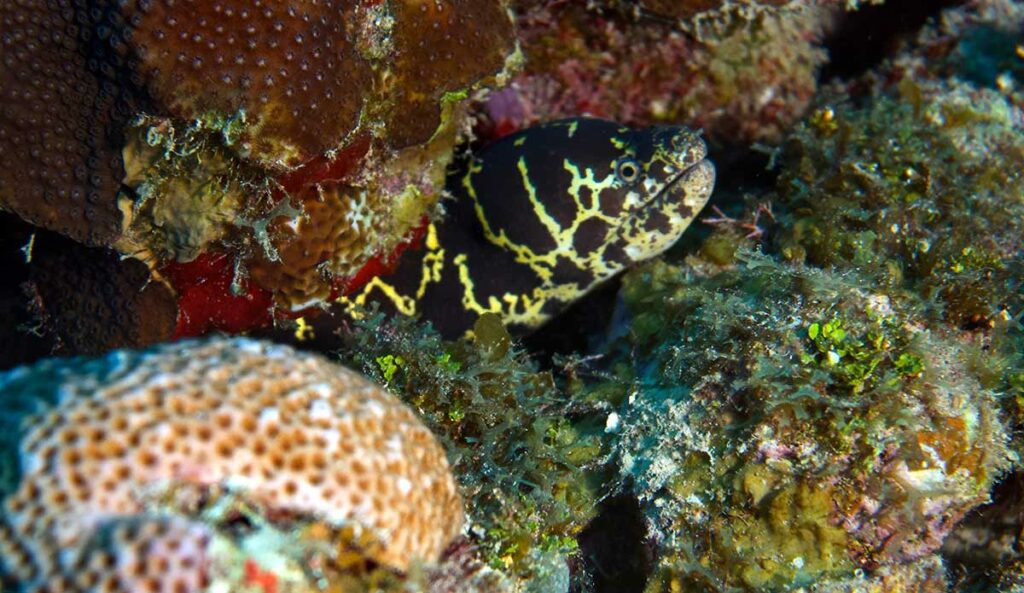
The chain moray is a 28-inch long eel with a blunt snout and a series of yellow chain-like patterns over a dark background — or the exact opposite, depending on how the viewer perceives the pattern. It is found in shallow water around coral reefs, and can actually absorb oxygen from open air; however, it will only last outside water as long as its skin stays wet, up to 30 minutes in recorded cases. The chain moray can swallow small crabs whole, and bigger specimens will be twisted, tugged, and thrashed before they meet their untimely end.
Conclusion
The Caribbean is a haven for diverse and mesmerizing fish species, adding to the region’s allure for underwater enthusiasts. From the vibrant and iconic Blue Tang to the intriguing Porcupinefish and the elegant Yellowtail Snapper, these underwater inhabitants captivate with their stunning colors, unique adaptations, and graceful movements.
However, the delicate balance of the Caribbean’s marine ecosystem faces challenges from invasive species like the lionfish. Conservation efforts strive to protect and preserve these underwater treasures, ensuring future generations can continue to marvel at the rich biodiversity and natural beauty that the Caribbean’s fish species bring to its crystalline waters.

